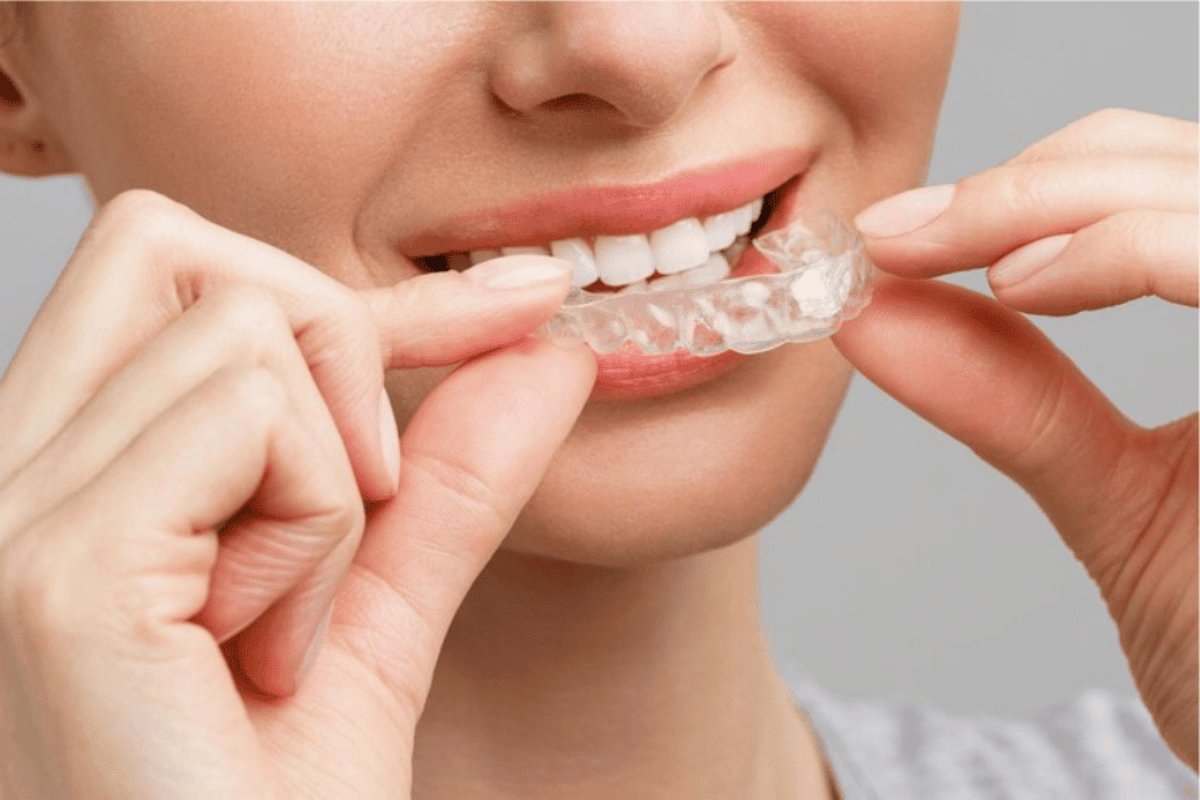Home>Lifestyle>The Ultimate Showdown: Hard Wax Vs Soft Wax – Which Hurts More?


Lifestyle
The Ultimate Showdown: Hard Wax Vs Soft Wax – Which Hurts More?
Modified: March 3, 2024
Discover the ultimate comparison between hard wax and soft wax to find out which is less painful. Learn which waxing method is best for your lifestyle.
(Many of the links in this article redirect to a specific reviewed product. Your purchase of these products through affiliate links helps to generate commission for Noodls.com, at no extra cost. Learn more)
Table of Contents
Introduction
When it comes to hair removal, there are various methods available, each with its own set of pros and cons. Among these methods, waxing has remained a popular choice for achieving smooth and hair-free skin. However, within the realm of waxing, there exists a longstanding debate between hard wax and soft wax. Both types of wax offer unique characteristics, and individuals often find themselves pondering which option is the better fit for their hair removal needs.
In this comprehensive guide, we will delve into the world of hard wax and soft wax, exploring their defining features, advantages, and drawbacks. Additionally, we will address a common concern among waxing enthusiasts: which type of wax hurts more? By thoroughly examining the pain levels associated with hard wax and soft wax, we aim to provide clarity and insight for those navigating the decision-making process.
So, whether you are a seasoned waxing veteran or a newcomer to the world of hair removal, join us as we unravel the ultimate showdown between hard wax and soft wax. By the end of this exploration, you will be equipped with the knowledge needed to make an informed choice that aligns with your personal preferences and pain tolerance.
What is Hard Wax?
Hard wax, also known as stripless wax, is a popular choice for hair removal due to its unique composition and application method. Unlike soft wax, which requires a muslin or cloth strip for removal, hard wax solidifies after application and is removed by gripping the edge of the cooled wax itself. This distinctive characteristic makes hard wax particularly well-suited for sensitive areas and delicate skin, as it adheres primarily to the hair rather than the skin, resulting in a less painful hair removal experience.
The composition of hard wax typically includes natural ingredients such as beeswax, rosin, and essential oils. These components work together to create a pliable yet sturdy wax that effectively grips the hair while remaining gentle on the skin. Furthermore, the absence of cloth strips in the removal process reduces the likelihood of skin irritation, making hard wax a preferred choice for individuals with sensitive skin or a low pain tolerance.
One of the defining features of hard wax is its ability to encapsulate and remove shorter hair, making it an ideal option for individuals seeking smooth, hair-free skin without the need for lengthy hair regrowth between waxing sessions. Additionally, hard wax is renowned for its versatility, as it can be applied to various body areas, including the face, underarms, bikini line, and other sensitive regions.
The application process of hard wax involves heating the wax to a specific temperature until it reaches a creamy consistency. Once the desired temperature is achieved, the wax is applied in a thick layer to the skin using a spatula. As the wax cools and solidifies, it effectively envelops the hair, allowing for efficient removal without causing undue discomfort or skin trauma.
In essence, hard wax stands out as a gentle yet effective hair removal solution that caters to individuals with varying pain thresholds and skin sensitivities. Its unique composition, stripless application, and ability to target shorter hair make it a valuable asset in the realm of waxing, offering a personalized and comfortable experience for those seeking a refined hair removal method.
What is Soft Wax?
Soft wax, also known as strip wax, is a popular and widely used method for hair removal that offers distinct characteristics and application techniques. Unlike hard wax, which solidifies after application, soft wax remains in a semi-liquid state and is typically removed using muslin or cloth strips. This method of removal allows for efficient and swift extraction of hair from the skin's surface, making it a preferred choice for larger body areas such as legs, arms, and back.
The composition of soft wax generally includes natural ingredients such as resin, beeswax, and essential oils, which work in harmony to create a pliable and adhesive wax formula. This adhesive quality enables the wax to effectively adhere to both the hair and the skin, ensuring thorough hair removal upon extraction with the cloth strips. While the application of soft wax may involve a slightly more intricate process compared to hard wax, the results often yield smooth and hair-free skin, making it a favored option for those seeking comprehensive hair removal across broader areas of the body.
The application of soft wax begins with heating the wax to an optimal temperature, allowing it to achieve a honey-like consistency. Once the wax reaches the desired texture, it is applied in a thin layer onto the skin using a spatula, following the direction of hair growth. Subsequently, a cloth strip is firmly pressed onto the wax, and after a brief moment, it is swiftly removed against the direction of hair growth, taking the hair along with it. This method ensures efficient hair removal while simultaneously exfoliating the skin, leaving behind a smooth and rejuvenated surface.
Soft wax is renowned for its ability to effectively grasp and remove fine hair, making it an ideal choice for individuals seeking a thorough and long-lasting hair removal solution. Additionally, the exfoliating properties of soft wax contribute to smoother skin texture, further enhancing the overall aesthetic appeal of the waxing experience. While the removal process of soft wax may involve a more intense sensation compared to hard wax, the results often justify the temporary discomfort, providing individuals with the desired outcome of impeccably smooth and hair-free skin.
In summary, soft wax presents a versatile and efficient hair removal method that caters to a wide range of individuals seeking comprehensive and long-lasting results. Its adhesive nature, exfoliating properties, and suitability for larger body areas position soft wax as a formidable contender in the realm of hair removal, offering a balanced approach to achieving smooth and refined skin.
Pros and Cons of Hard Wax
Hard wax, with its unique characteristics and application method, offers a range of advantages and disadvantages that warrant consideration for individuals exploring hair removal options.
Pros of Hard Wax
-
Gentle on the Skin: Hard wax adheres primarily to the hair rather than the skin, resulting in a less painful hair removal experience. This gentle approach makes it suitable for individuals with sensitive skin or a low pain tolerance.
-
Effective for Shorter Hair: Hard wax has the ability to encapsulate and remove shorter hair, allowing for more frequent waxing sessions without the need for significant hair regrowth. This makes it an ideal choice for maintaining consistently smooth skin.
-
Versatility: Hard wax can be applied to various body areas, including sensitive regions such as the face, underarms, and bikini line. Its versatility makes it a convenient option for individuals seeking comprehensive hair removal solutions.
-
Reduced Skin Irritation: The absence of cloth strips in the removal process reduces the likelihood of skin irritation, making hard wax a preferred choice for those with delicate or easily irritable skin.
-
Less Messy Application: The solidification of hard wax after application results in a less messy process compared to soft wax, providing a cleaner and more controlled hair removal experience.
Cons of Hard Wax
-
Application Temperature: Achieving the optimal temperature for hard wax application requires precision and careful monitoring to ensure it reaches the desired consistency. Inexperienced users may find this aspect challenging.
-
Potential Breakage: If the hard wax is not applied and removed correctly, there is a risk of hair breakage, which can lead to suboptimal results and the need for additional touch-ups.
-
Limited for Larger Areas: While hard wax is suitable for sensitive and smaller areas, it may not be the most efficient choice for larger body areas due to its targeted application and removal method.
-
Initial Discomfort: While hard wax is generally less painful than soft wax, individuals with very low pain tolerance may still experience initial discomfort during the removal process.
In weighing the pros and cons of hard wax, individuals can make an informed decision based on their specific hair removal needs, pain tolerance, and desired outcomes. The unique benefits and limitations of hard wax contribute to its position as a viable option for achieving smooth and hair-free skin.
Pros and Cons of Soft Wax
Soft wax, a prevalent method for hair removal, presents a range of advantages and disadvantages that warrant careful consideration for individuals seeking an effective and comprehensive hair removal experience.
Pros of Soft Wax
-
Efficient Hair Removal: Soft wax effectively adheres to both the hair and the skin, allowing for swift and thorough hair removal. This efficiency makes it a preferred choice for individuals seeking a comprehensive solution for larger body areas such as legs, arms, and back.
-
Exfoliating Properties: The application and removal process of soft wax involves a gentle exfoliation of the skin, resulting in a smoother and rejuvenated skin surface. This added benefit contributes to the overall aesthetic appeal of the waxing experience, leaving individuals with a sense of revitalization and enhanced skin texture.
-
Suitable for Fine Hair: Soft wax has the capability to grasp and remove fine hair with precision, making it an ideal choice for individuals seeking a thorough and long-lasting hair removal solution. This suitability for fine hair ensures that the skin remains smooth and hair-free for an extended period, aligning with the desired outcome of a refined and polished appearance.
-
Versatility: While soft wax is commonly used for larger body areas, it can also be applied to more delicate regions with careful precision. Its adaptability across various body areas makes it a versatile option for individuals seeking a comprehensive and uniform hair removal experience.
-
Ease of Application: The semi-liquid state of soft wax allows for a smooth and controlled application process, providing individuals with a consistent and manageable hair removal experience. This ease of application contributes to a streamlined and efficient waxing session, catering to the convenience and comfort of the individual.
Cons of Soft Wax
-
Potential Skin Irritation: The adhesive nature of soft wax, while effective for hair removal, may lead to skin irritation in individuals with sensitive or easily irritable skin. This potential for skin discomfort requires careful consideration, particularly for those with known skin sensitivities.
-
Temporary Discomfort: The removal process of soft wax may involve a more intense sensation compared to hard wax, potentially causing temporary discomfort during the hair extraction process. While the results often justify the momentary discomfort, individuals with low pain tolerance may find this aspect challenging.
-
Messier Application: The use of cloth strips in the removal process of soft wax may result in a slightly messier application compared to hard wax. This aspect requires careful handling to ensure a controlled and efficient hair removal experience.
In evaluating the pros and cons of soft wax, individuals can gain valuable insight into its suitability for their specific hair removal needs and pain tolerance. The distinctive benefits and limitations of soft wax contribute to its standing as a versatile and effective method for achieving smooth and refined skin.
Pain Level Comparison
When considering the pain levels associated with hard wax and soft wax, it's essential to recognize the distinct sensations and experiences that accompany each method of hair removal. The pain experienced during waxing is subjective and varies from person to person based on individual pain tolerance, skin sensitivity, and the specific body area being treated.
Hard wax, known for its gentle approach to hair removal, generally elicits a milder sensation compared to soft wax. The unique composition and application method of hard wax contribute to a less intense experience, particularly for individuals with sensitive skin or a low pain threshold. As hard wax solidifies and adheres primarily to the hair rather than the skin, the removal process involves minimal pulling on the skin, resulting in reduced discomfort and a more comfortable hair removal experience.
On the other hand, soft wax, with its adhesive nature and swift removal using cloth strips, may lead to a more pronounced sensation during the hair extraction process. The comprehensive grip of soft wax on both the hair and the skin, while efficient for thorough hair removal, can result in a temporary discomfort that is more noticeable compared to hard wax. This aspect is particularly relevant for individuals with heightened skin sensitivity or those seeking hair removal across larger body areas, where the intensity of the sensation may be more prominent.
It's important to note that while the initial discomfort associated with soft wax may be more noticeable, the results often justify the temporary sensation, leaving individuals with smooth and hair-free skin. Conversely, the minimal pulling and reduced skin contact involved in hard wax application and removal contribute to a milder and less intrusive experience, aligning with the preference of those seeking a gentler hair removal method.
Ultimately, the pain level comparison between hard wax and soft wax underscores the nuanced nature of waxing experiences. Individuals are encouraged to consider their pain tolerance, skin sensitivity, and specific hair removal needs when choosing between hard wax and soft wax, ensuring a personalized and comfortable waxing experience that aligns with their individual preferences and desired outcomes.
In summary, the pain levels associated with hard wax and soft wax are influenced by their unique characteristics and application methods, offering individuals the opportunity to select a hair removal approach that best suits their comfort level and aesthetic goals.
Factors Affecting Pain Level
The perception of pain during waxing is influenced by a myriad of factors that encompass individual physiology, psychological disposition, and external variables. Understanding these factors is crucial in gauging and managing the discomfort associated with hair removal, whether through hard wax or soft wax methods.
1. Pain Threshold:
Individuals exhibit varying pain thresholds, which dictate their tolerance for discomfort during waxing. Factors such as genetics, previous pain experiences, and overall sensitivity to stimuli contribute to the diversity in pain tolerance levels. Those with a higher pain threshold may perceive waxing as a manageable sensation, while individuals with a lower pain threshold may find the experience more challenging.
2. Skin Sensitivity:
The sensitivity of the skin in the targeted waxing area plays a significant role in determining the perceived pain level. Areas with thinner or more delicate skin, such as the face or bikini line, may elicit a heightened sensation compared to areas with thicker skin, such as the legs or back. Additionally, individuals with skin conditions or heightened sensitivity may experience increased discomfort during waxing.
3. Hair Density and Coarseness:
The density and coarseness of the hair being removed can impact the pain experienced during waxing. Thicker, coarser hair may require more forceful removal, leading to a more pronounced sensation. Conversely, finer hair may result in a milder discomfort during the waxing process.
4. Psychological State:
An individual's psychological state, including their anxiety levels and overall mental disposition, can influence the perception of pain during waxing. Those who approach the experience with a relaxed mindset may find the discomfort more manageable, while individuals experiencing heightened anxiety may perceive the sensation as more intense.
5. Technique and Experience of the Esthetician:
The expertise and technique of the esthetician performing the waxing procedure can significantly impact the pain level experienced by the individual. A skilled esthetician with experience in waxing techniques can execute the process with precision, minimizing unnecessary discomfort and ensuring a smoother hair removal experience.
6. Pre- and Post-Waxing Care:
Proper pre- and post-waxing care, including exfoliation, moisturization, and adherence to aftercare recommendations, can influence the pain level experienced during and after waxing. Well-prepared skin and diligent post-waxing care can contribute to a more comfortable and less painful waxing experience.
By acknowledging these factors, individuals can gain insight into the nuanced nature of pain perception during waxing. Whether opting for hard wax or soft wax, understanding these variables allows for a more informed and personalized approach to hair removal, catering to individual comfort levels and enhancing the overall waxing experience.
Conclusion
In the ultimate showdown between hard wax and soft wax, it becomes evident that both hair removal methods offer distinct advantages and considerations for individuals seeking a personalized and comfortable waxing experience. The defining features of hard wax, including its gentle adherence to the hair and reduced skin contact, position it as a favorable option for those with sensitive skin or a preference for a less intrusive hair removal process. On the other hand, soft wax, with its efficient grip on both hair and skin and suitability for larger body areas, presents a comprehensive solution for individuals seeking thorough and long-lasting hair removal results.
The pain level comparison between hard wax and soft wax underscores the nuanced nature of waxing experiences, with hard wax generally eliciting a milder sensation due to its targeted application and gentle removal process. Conversely, the adhesive nature of soft wax may lead to a more pronounced discomfort during hair extraction, particularly for individuals with heightened skin sensitivity or those seeking hair removal across larger body areas. However, the results often justify the temporary discomfort associated with soft wax, leaving individuals with smooth and hair-free skin.
Understanding the factors that influence pain perception during waxing, including individual pain thresholds, skin sensitivity, and hair characteristics, provides valuable insight into the personalized nature of the waxing experience. By considering these factors, individuals can make informed decisions when choosing between hard wax and soft wax, ensuring a hair removal approach that aligns with their comfort level and aesthetic goals.
In essence, the choice between hard wax and soft wax hinges on individual preferences, pain tolerance, and specific hair removal needs. Both methods offer unique benefits and limitations, catering to a diverse range of individuals seeking a refined and comfortable waxing experience. Whether opting for the gentle application of hard wax or the comprehensive grip of soft wax, individuals can embark on their waxing journey with confidence, knowing that their chosen method aligns with their desired outcomes and comfort level.
Ultimately, the ultimate showdown between hard wax and soft wax highlights the personalized and multifaceted nature of hair removal, empowering individuals to embrace a waxing experience that is tailored to their unique needs and preferences.











